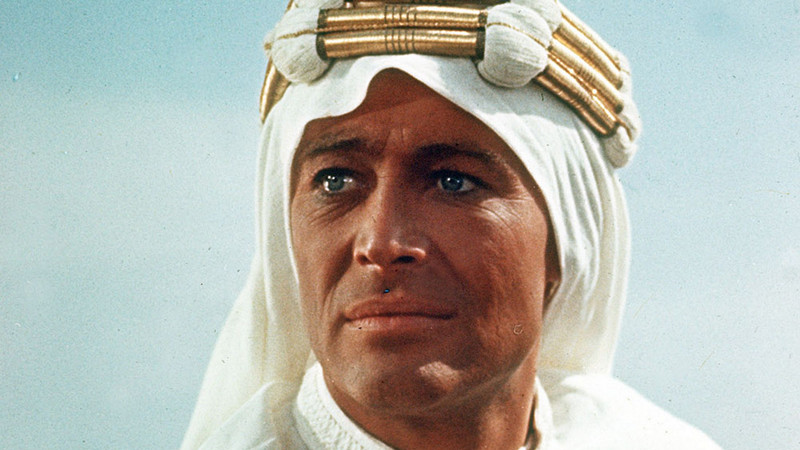
If you consider yourself a serious film fan, you must be familiar with at least a handful of essential undisputed masterpieces from every film genre, from horror to comedies and from Westerns to biographical films.
This list concerns the latter category. The majority of cinema aficionados are likely to already be familiar with most of these films and if you consider yourself one, you might already have seen most of them but perhaps you are still missing a few. If you have just recently discovered the art of cinema, and are now looking for your next cinematic obsession, these ten films serve as a great starting point for anyone wanting to discover the amazing world of biopics.
Most biographical films attempt to comprehensively tell the life story of a non-fictional or historically-based person, yet some films confine themselves to depicting only a certain period in that person’s life.
Most biopics try to do so as truthful to history as possible, however, some chose to deliberatively avoid telling the truthful story in order to dramatize their own story, thereby merely utilizing the biographical aspect of the story as an off-set for, perhaps, an even greater story. However, this doesn’t mean that the first way of making biopics is any better or worse than the second, it’s just different, and both methods have their virtues and can be used to tell a powerful story.
It should be mentioned that this list seeks to serve as a representation of the highest quality in the biopic genre, based on criteria that try to look past personal and popular taste, to encompass only the films that artistically defined the history of biographical films.
It is, of course, impossible to definitively select only ten films to represent the pinnacle of a genre. But it can at the very least and with complete certainty be said that these films helped to define the biopic genre, and still to this day serves as indispensable reference points for any serious filmmaker wanting to depict the life story of a non-fictional character.
10. The Elephant Man (1980, David Lynch)
Based on the life of the deformed Joseph Merrick
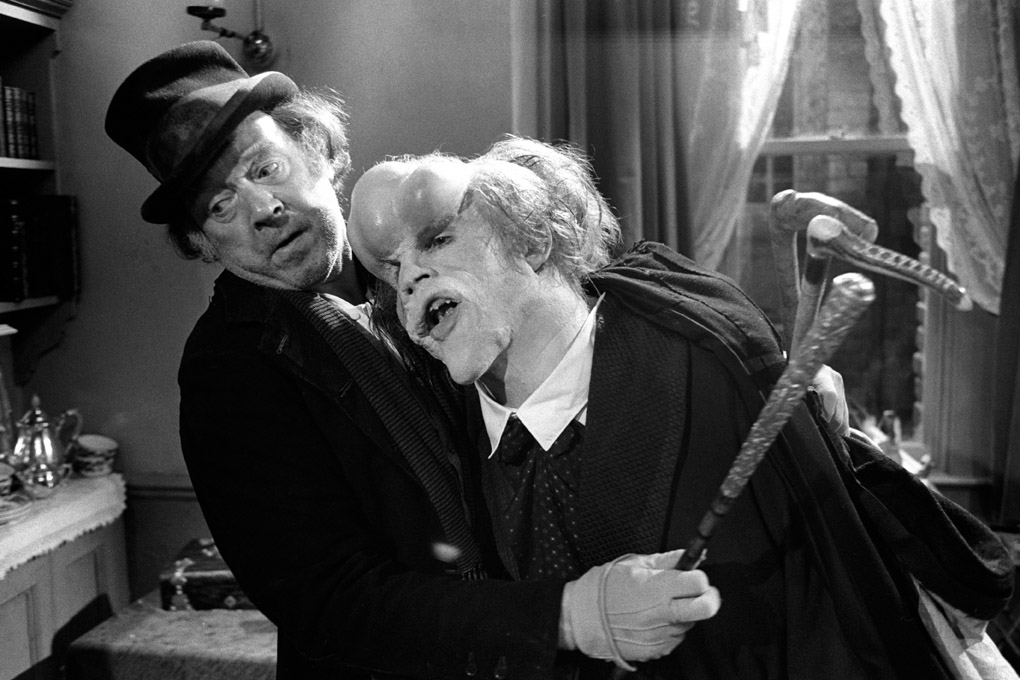
Depicting the life of the severely deformed John Merrick (his Americanized name in the film) as he struggles to live a peaceful life, David Lynch’s “The Elephant Man” proves to be a truly captivating and timeless study of the nature of prejudice as one critic rightfully has stated.
The film follows London Hospital surgeon Frederick Treves (Anthony Hopkins) as he one day finds John Merrick (John Hurt) being terribly mistreated in a Victorian freak show at the outskirts of London. We quickly gather that he has been kept at the freak show against his will by his “owner”, the vicious Mr. Bytes (Freddie Jones), ever since his mother abandoned him as an infant.
When Treves realizes what is going on, he pays Mr. Bytes to let Merrick go to the hospital for exams but later decides to keep Merrick at the hospital against Bytes’ will. Before long, Merrick and Treves develop a close bond as Treves tries to cure Merrick and bring happiness to his life.
Throughout the film, Treves, and the audience, begins to see Merrick’s interior beauty which lies beneath his disfigured outer. This is just one of the reasons “The Elephant Man” can be viewed as David Lynch’s most humanist work to date as well as being a masterclass in emotional filmmaking.
Perhaps this is the reason why “The Elephant Man” also happens to be Lynch’s most commercial film as it brought back the cost of the film five times.
Yet, reviewing Lynch’s “The Elephant Man” without mentioning John Hurt’s superb performance as John Merrick would be completely ludicrous. The film stand or fall by his performance and fortunately, Hurt delivers what may be considered as a performance of a lifetime. Never for one second do you think there’s an actor under the many layers of make-up, and despite all his make-up, Hurt is convincingly able to make you feel his agony and frustrations.
Upon studying the historic source material on which “The Elephant Man” is based, you learn that several characters have been portrayed misleadingly in the film, Treves, for instance, acted much more selfishly than he appears to do in the film. Nevertheless, this shouldn’t be seen as a flaw. By dramatizing the life of Joseph Merrick, Lynch not only convincingly depicts the life of Joseph Merrick but manages to humanize him, ultimately creating a tour-de-force of pure emotional filmmaking on par with “Schindler’s List” and “The Grapes of Wrath”.
9. Ivan the Terrible, Parts I & II (1958, Sergei Eisenstein)
Based on the life of the Great Tsar Ivan IV of Russia
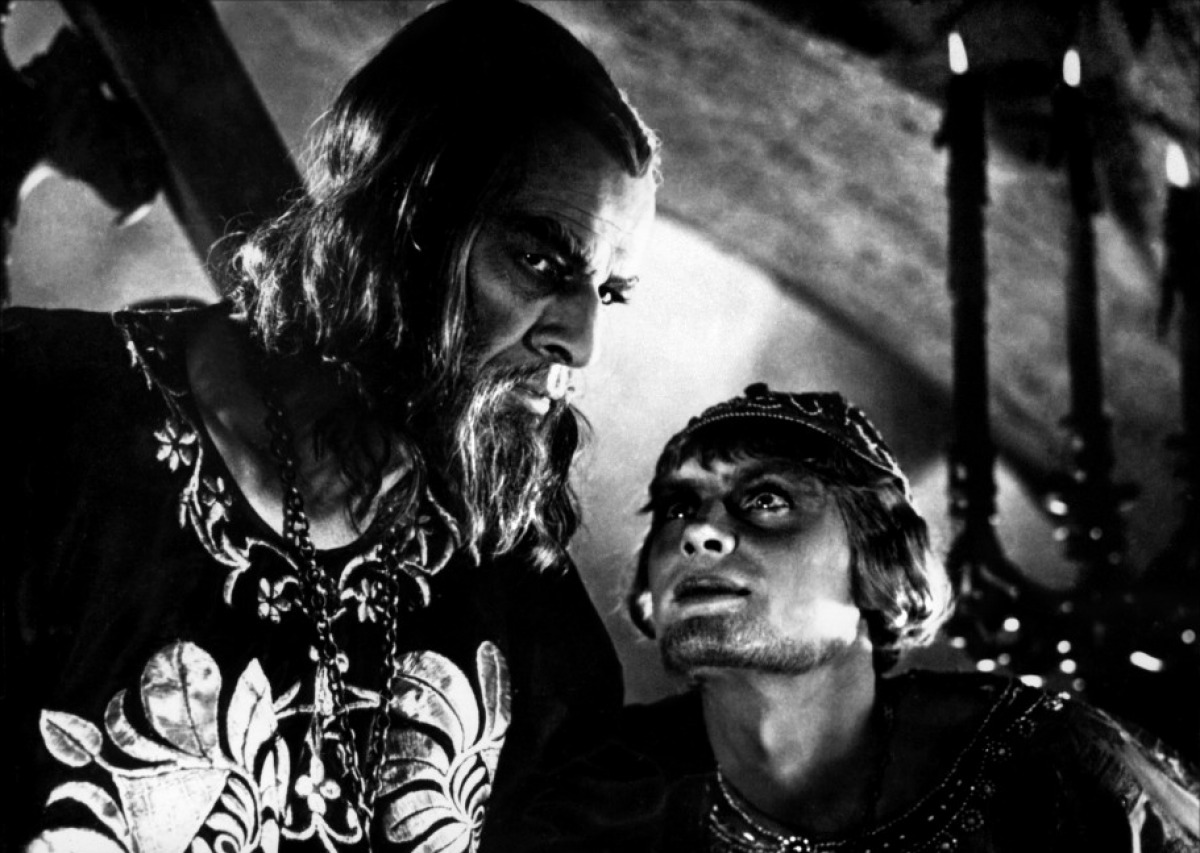
Often referred to as Eisenstein’s greatest film, “Ivan the Terrible” was originally supposed to be one three-part historical epic depicting the triumph of Ivan IV, commissioned by Soviet Premier Joseph Stalin, who is said to have admired and identified himself with Ivan. Instead, after the release of Part I, Part II got banned by Stalin himself, who disliked the depiction of Ivan in Eisenstein’s film, and Part II wasn’t shown before 1958, 10 years after Eisenstein’s death. Unfortunately, when Part II got banned, the filming of Part III was stopped and the footage which had been filmed was destroyed.
In Part I, Ivan IV (Nikolay Cherkasov) crowns himself Tsar of Russia and begins to reclaim lost Russian territory as he wants to unite and protect Russia against foreign armies outside of the border. Soon after, Ivan marries, however, his marriage causes him to lose the friendship of his two best friends.
At the wedding, Ivan receives a ceremonial knife from the Khanate of Kazan. The knife implies that he should use it to commit suicide. This causes him to immediately proclaim that his kingdom is at war with Kazan. In Part II, he finds his wife dead from poisoning which causes him to get stricken with loneliness as he continues to pursue a unified Russia. That is when he realizes that in order to consolidate his power, he must establish a personal army. Meanwhile, his political rivals, the Russian boyars, learn that their only option is to assassinate Ivan.
In the majority of biographical films, the director and the scriptwriter (for “Ivan the Terrible”, this is the same person), usually tries to focus on one particular aspect of that person’s life, but sometimes the maker(s) of the biopic can write/direct themselves into that very film and as one critic argues, that is the case of “Ivan the Terrible”, “Depicting the growing isolation and ruthlessness of the ruler who united Russia in the 16th century, [Ivan the Terrible] can also be seen as an anguished self-portrait of Eisenstein’s own solitude at the end of his career.”
As Eisenstein moved from silent cinema to sound, he realized that he couldn’t, to the same extent, rely on his montage editing style – it was now a thing of the past – instead, he chose to enhance his storytelling by the use of breathtaking visuals – a skill he quickly mastered. By the time he made “Ivan the Terrible”, he had become an expert in visual and auditory storytelling and “Ivan the Terrible” is the proof of it.
In one of the most extraordinary scenes, not only in the film but in the history of cinema, Eisenstein opts to shoot the sequence in color, a vast contrast to the black and white used in the rest of the film. The color is made use of, to emphasize the transition from good to bad and it also appropriately serves as to indicate the climax of his epic three-hour masterpiece.
8. Napoleon (1927, Abel Gance)
Based on the life of military leader Napoléon Bonaparte
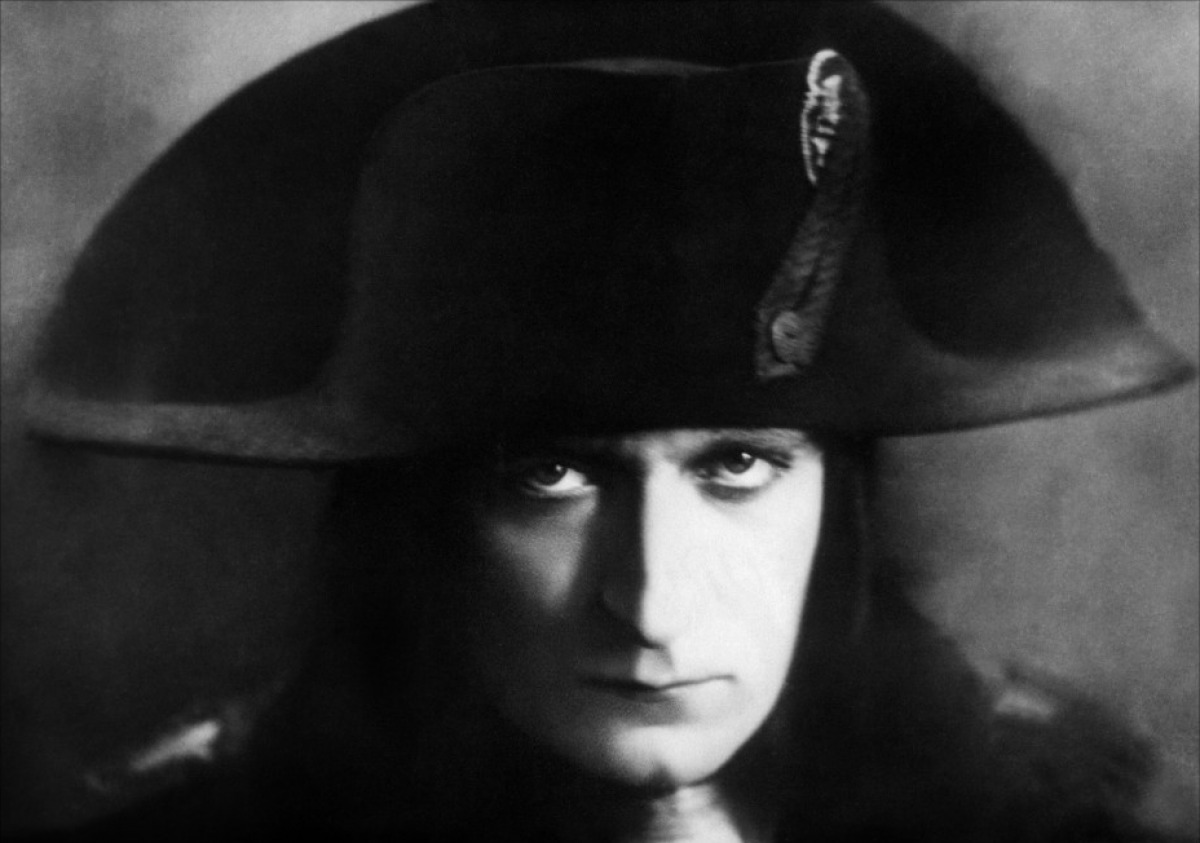
Like Eisenstein’s “Ivan the Terrible”, Abel Gance’s “Napoleon” is also amongst one of the most aesthetically and visually beautiful films ever exposed to celluloid. But unlike “Ivan the Terrible”, “Napoleon” is perhaps one of the most groundbreaking masterpieces in the history of cinema.
In “Napoleon”, Abel Gance employed many innovative techniques to enhance his portrayal of Napoléon Bonaparte’s life, some for the first time. Some of the techniques he used were multiple-camera setups, a wide variety of hand-held camera shots, underwater camera, split screen and mosaic shots, just to mention a few. The reason for the awesomeness of “Napoleon” isn’t because he used these techniques but because of the way he was able to integrate these advanced techniques into his storytelling.
The film chronologically follows Napoleon’s life from early childhood when he attended military school to the early stage of his military career. During his adolescence, in one magnificent scene, he’s seen managing a snowball fight like a military campaign, afterward, we follow a short portion of his life in military school.
A decade later we find Napoleon (Albert Dieudonné) as a young army lieutenant during the French Revolution. He returns home to visit his family in Corsica but as politics have shifted against him, he suddenly finds himself in mortal danger. So he decides to flee, taking his family back to France where he will become officer of artillery in the Siege of Toulon.
Many biographical films portraying historical persons usually ends with the death of the protagonist, yet, “Napoleon” ends many years before that. The reason for this abrupt ending is that Gance originally planned for “Napoleon” to be the first of six films portraying Napoleon Bonaparte’s life and career, “a chronology of great triumph and defeat ending in Napoleon’s death in exile on the island of Saint Helena”. But as Gance spent the entire budget (and more) on the first film (“Napoleon”), he realized that the costs involved would make the full project impossible.
“Napoleon” is an undisputed masterpiece and the triptych climax of the film, which alternates widescreen panoramas with “complex multiple- image montages projected simultaneously on three screens”, is simply one of the most magnificent and awe-inspiring moments in all of cinema and serves as a perfect conclusion to a perfect film.
7. My Darling Clementine (1946, John Ford)
Based on the life of frontier marshal Wyatt Earp
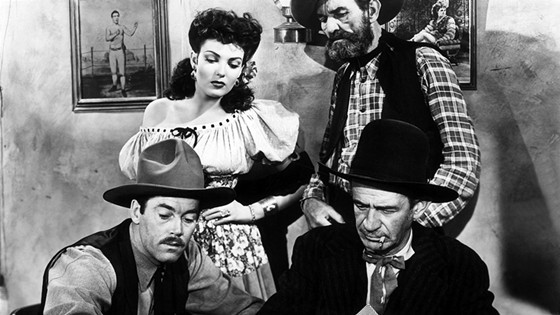
Few films and even fewer Westerns are as sweet and good-hearted as “My Darling Clementine”. It is one of the great films of the twentieth century, poetically depicting a couple of days in the life of Wyatt Earp along with his involvement in the gunfight at the OK Corral in Tombstone, Arizona. The famous story of the gunfight has often been depicted in movies but never like Ford did it in “My Darling Clementine”.
Usually, the showdown becomes the cornerstone of the film, leaving the rest of the film merely trivial, but in “Clementine”, Ford doesn’t emphasize the melodrama of the showdown, it is simply a result of what has happened earlier in the film, thus, Ford makes us realize that it is what lead up to the gunfight that is significant.
We follow the story through Wyatt Earp (Henry Fonda), a good-hearted former town marshal who believes in rules and regulations. We first meet him as he and his brothers are driving cattle east to Kansas. In need of a break, Wyatt and his brothers leave their youngest brother James in charge of the herd. When they reach the town, much to their dismay, they find out that Tombstone has become a lawless town without a marshal, driven by anarchy. They quickly return to their camp but it’s too late, the cattle have been stolen and James murdered.
At this point, one might imagine that the story would turn into a run-of-the-mill revenge story, but it doesn’t. Wyatt seeks to avenge his brother but he isn’t blinded by hate. He wants revenge, but legally. Therefore, Wyatt takes on the much-needed job of town marshal in Tombstone and vows to stay there until James’ killers are found.
For most viewers, “My Darling Clementine” is the story of the gunfight at the OK Corral and while this isn’t untrue, “Clementine” is just as much a story about the end of the Old West and the arrival of civilization. That is why John Wayne wasn’t cast for Wyatt Earp because Wayne had become the embodiment of the Old West while Fonda could be seen as a representation of the New. Perhaps this is also why the film is set a year later than the actual event, to depict the clash between the New and the Old West.
The renowned director of the film, John Ford (1895-1973), is often quoted as saying, “My name’s John Ford. I make Westerns”, and it is not unlikely that he very well might have been the greatest director of Westerns, possibly the greatest of all American directors, and “My Darling Clementine” is the proof of that, as it has often been hailed as Ford’s best film by notable figures such as Roger Ebert. It is truly one of the greatest films ever made and an absolute must-see for any fan of Westerns or biographical films.
6. Aguirre, the Wrath of God (1972, Werner Herzog)
Based on the life of the Basque Spanish conquistador Lope de Aguirre
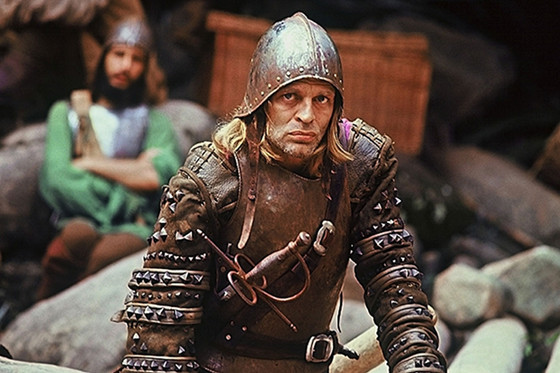
“Aguirre, the Wrath of God”, Werner Herzog’s third film, stands as the supreme achievement of his career. This extraordinary film that helped put the New German Cinema on the map, has been acclaimed by generations of audiences. It is a consummate study of the possessive nature of man, and a devastating character study of the eponymous Lope de Aguirre. The film possesses a haunting quality which is always apparent but impossible to describe, leaving most viewers speechless, and by utilizing guerrilla filmmaking techniques, Herzog creates a raw, yet awe-inspiring masterpiece.
Werner Herzog’s “Aguirre, the Wrath of God” is likely the greatest cinematic expressions of insanity and an experience every film fan deserves to have at least once. It tells the story of the real-life Spanish soldier Gonzalo Pizarro (Alejandro Repullés), who in 1560, along with his conquistadors, in search of the fabled legendary city of gold, El Dorado, lead more than one hundred Indian slaves through the Amazon Jungle.
The opening shot of “Aguirre” conveys a feeling of timelessness and mystique as we see the hundreds of Indian slaves, marching down the steep Andes mountains, while clouds of mist obscure our view. As we witness this striking image through Herzog’s masterful lens, we forget that “Aguirre” was made in 1972.
Herzog’s successfully manages to re-create Lope de Aguirre’s search for El Dorado in 1560 – it feels as if we’re witnessing the legend unfold for the very first time. Later in the film, on New Year’s Eve, the soldiers have reached the end of their supplies and without more information, finding El Dorado seems near impossible.
Pizarro orders a small group of men to scout the area farther up-river. It is led by Don Pedro de Ursua, with Lope de Aguirre (Klaus Kinski) as his second in command, they’re told to raft down the river to seek food and directions to El Dorado. But before long, Aguirre leads a mutiny which eventually results in the loss of his sanity and the death of everyone else.
At the center of this dreamlike masterpiece, along with Herzog’s idiosyncratic direction, is Klaus Kinski’s tour-de-force portrayal of insanity itself, Lope de Aguirre. His obsession with finding El Dorado is present in every word he utters and by the end of the film, we find that Kinski has become the embodiment of pure madness.
After more than 40 years, “Aguirre, the Wrath of God” continues to repeatedly top critics’ “greatest films” lists and amaze its audience with its visionary audacity, only equaled in Coppola’s “Apocalypse Now” and Kubrick’s “2001: A Space Odyssey”. A true masterpiece of world cinema that will continue to be relevant as long as the medium exists.